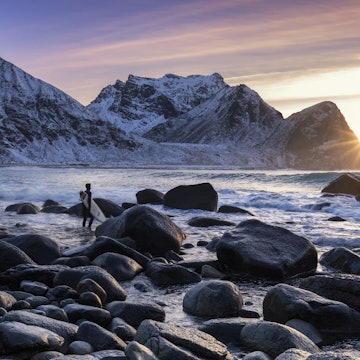
The Lonely Planet guide to surfing in Newquay, Cornwall


Newquay's Fistral Beach is one of England's best-known surf spots. 10c_Photoclub/Shutterstock
In surfing circles, few places in Britain have quite the same cachet as Newquay in Cornwall. When the conditions are right, the Cribbar Reef off the Towan Headland delivers impressive, barreling waves that can reach more than 9m (30ft) in height.
The break known as the “Widow Maker” is not for amateurs. It only appears at low tide during the stormy months of autumn and winter, when powerful swells move in from the Atlantic; jagged rocks wait for those who fail to make the drop. Indeed, Cribbar remained untamed until 2004, when it was conquered by South African big-wave supremo Chris Bertish.
The good news is that you don’t need to be one of the world’s top surfers to enjoy the waves at Newquay. From sheltered, beginner-friendly surf at Towan Beach to the thrilling breaks of Fistral Beach, there are waves here for all levels, with more waiting in the coves to the north and south.
Whether you come for the warm summer months or brave the churning waters in winter, surfing in and around Newquay is one of the top things to do in Cornwall. Here’s our guide to getting the best from a surfing trip to Newquay.
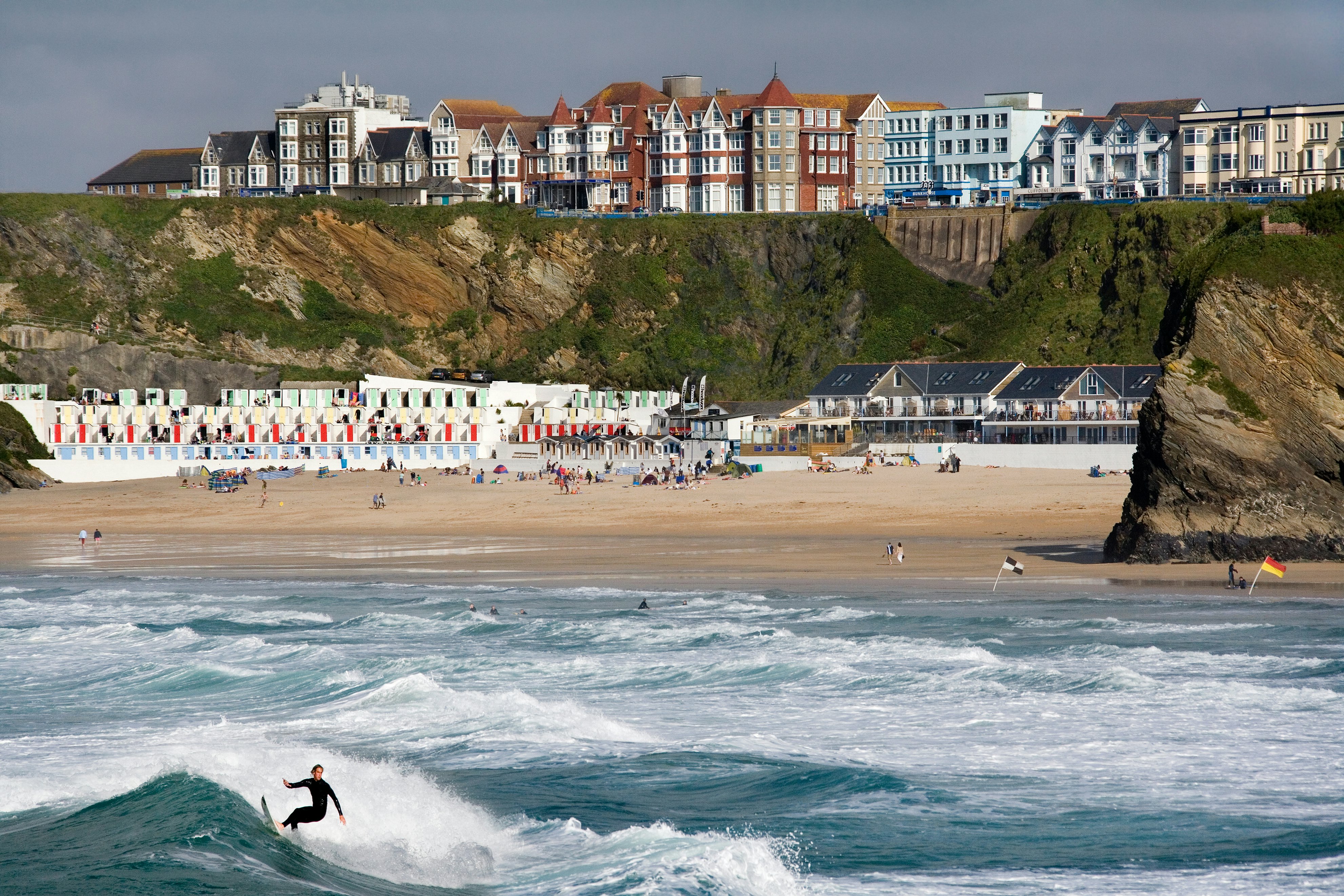
What’s the history of surfing in Newquay?
The first known surfer at Newquay was a British dentist in the 1930s called Jimmy Dix, who was inspired by magazine photos of Hawaiian surfers. He wrote to Honolulu legend Duke Kahanamoku for tips on building a board, then unexpectedly received a 4m (13ft) board in the post, which he put to good use on the breaks around Newquay.
Surfing here really took off after WWII, as people took advantage of growing amounts of leisure time to relax on Cornwall’s beaches. The tipping point came in 1962, when Australian lifeguards John Campbell, Ian Tiley, Bob Head and Warren Mitchell came to town, bringing fiberglass boards that made surfing vastly more accessible to would-be surfers.
Bob Head joined forces with local surfers Bill Bailey and Doug Wilson to found the European Surfboard Company, in turn attracting more surfing talent. This included the London-born, Australia-raised competitive surfer and filmmaker Rod Sumpter, who put the city on the international surfing map with his distinctive Union Jack board. In 1983, Newquay was described by a journalist as England’s “surf city” – and its reputation was assured.
Today, the breaks around Newquay attract hundreds of thousands of surfers every year, joining legions of seaside holidaymakers and groups on stag nights and hen weekends. The waves are busiest in summer, but serious surfers come in spring and fall, or even winter, when the breaks are more powerful and less crowded.
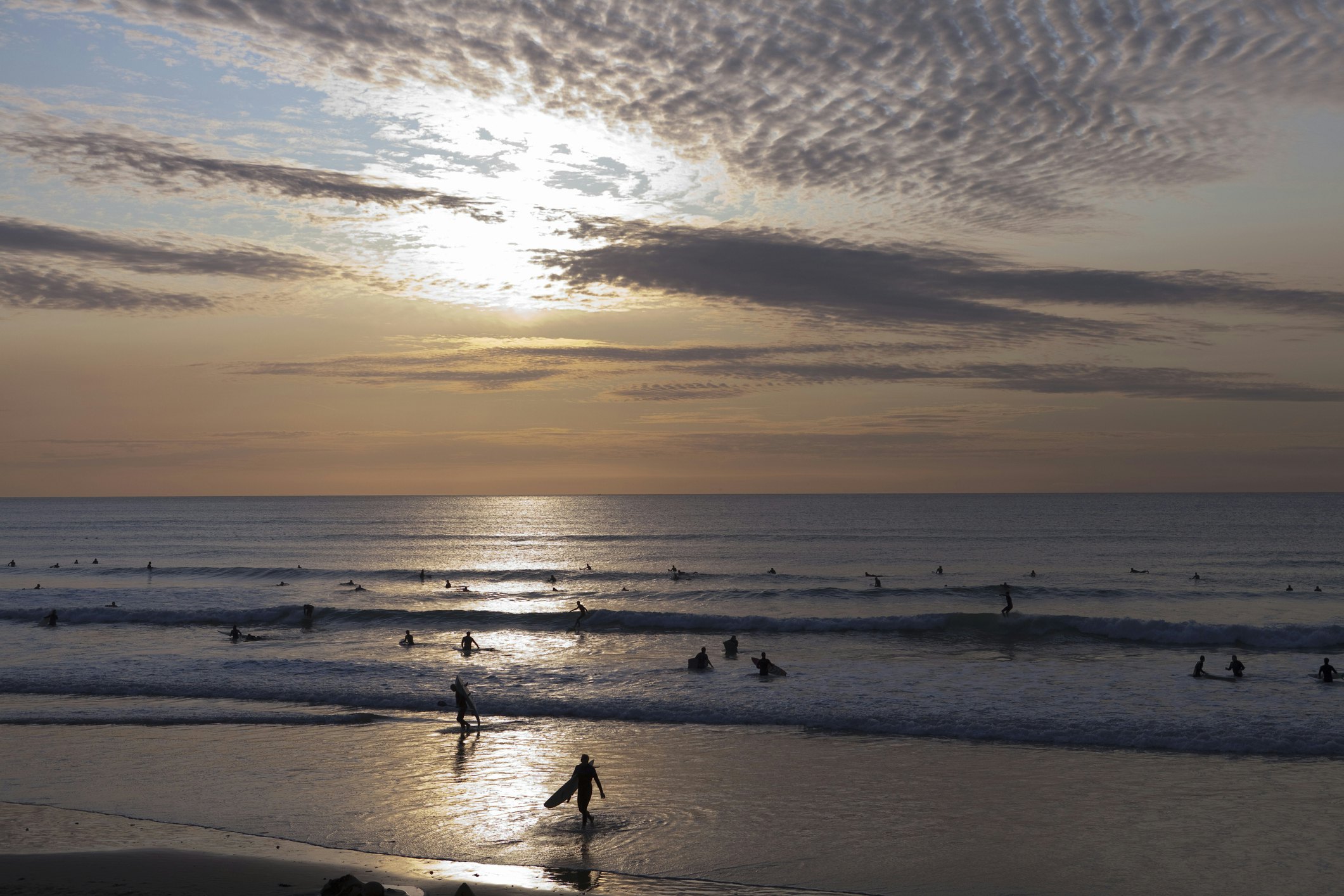
When should I go surfing in Newquay?
Facing directly onto the open Atlantic, Newquay is a year-round surf spot. The summer months from June to August see huge crowds, lured by consistent waves, mild water temperatures and long hours of daylight. During this busy season, many serious surfers decamp to small, quieter coves along the Cornish coast to avoid the crowds.
The surf is bigger and stronger in spring and fall, and sometimes enormous in winter, though the cold water will limit the amount of time you can spend out on the waves. In summer, a 3/2mm wetsuit is fine; in spring and fall, bring a 4/3mm or 5/3mm wetsuit.
To tackle the chilly waters in winter, you’ll need a 5/4mm or 6/5mm suit, with boots, a hood and gloves. On the flip side, the crowds vanish, and winter surfing in Cornwall can be a life-affirming experience.
What’s the surfing etiquette in Newquay?
With so many surfers in the water, it’s important to follow good surfing etiquette. Be respectful toward other surfers in the water, be mindful of right of way (ie, give priority to the surfer closest to the peak of any wave), avoid dropping in on someone else’s wave, and keep things friendly and courteous in the lineup.
Cornwall has a friendly surf scene and a well-established resident surfing community, and locals are welcoming to newcomers and beginners who respect the rules and don’t get in the way of experienced surfers. If you do accidentally get in someone’s way, apologize – a little courtesy goes a long way.
For safety, surf within your skill level and watch for hazards such as submerged rocks and rip currents – and know how to avoid them. Black-and-white checkered flags indicate the approved surfing areas on Newquay’s beaches, and RNLI lifeguards patrol the beaches from spring until the end of the summer.
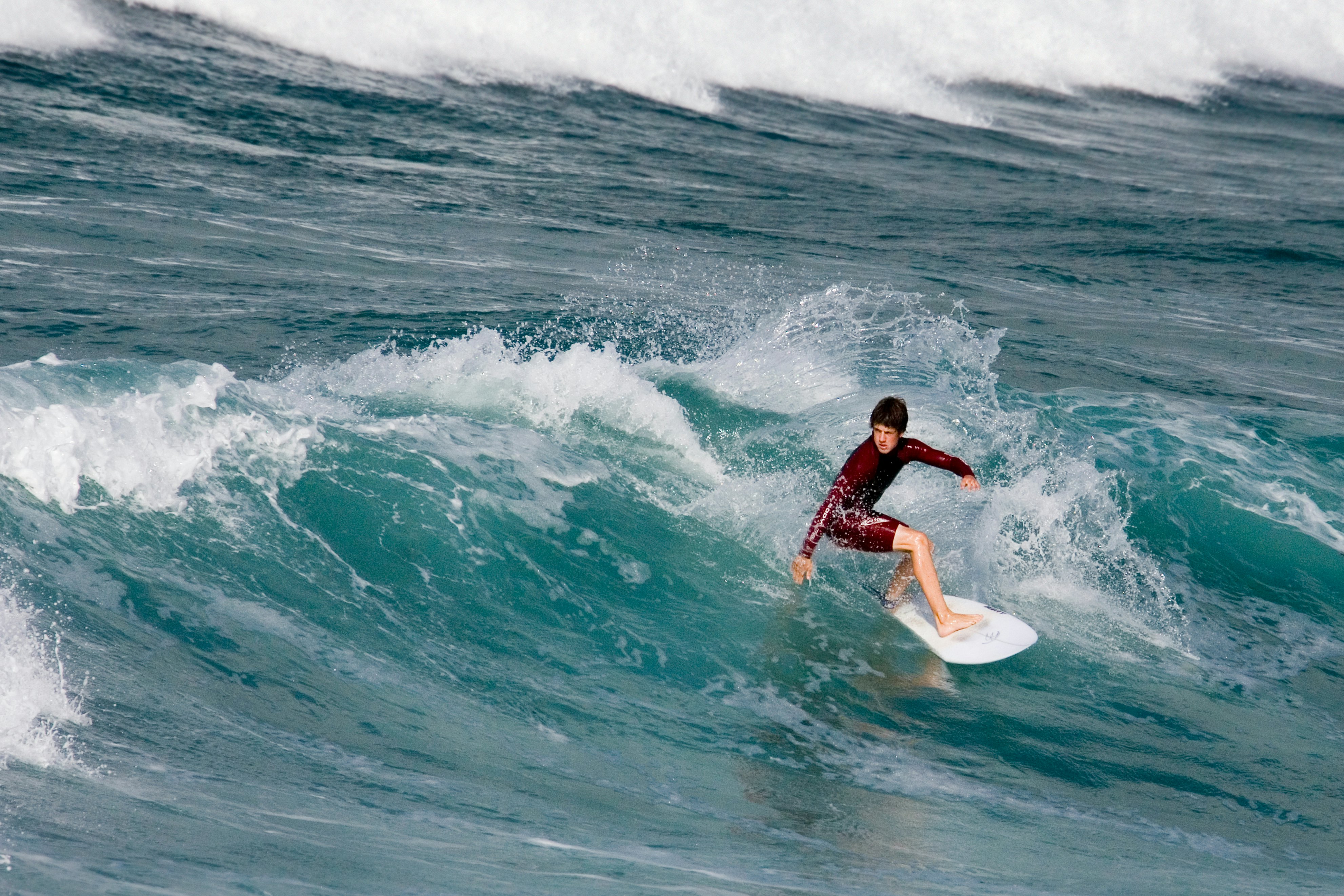
What are the best surf beaches in and around Newquay?
Here’s an overview of the best surf beaches in Newquay and beyond.
Fistral Beach
Best for big surf and bragging rights
Sweeping along the western edge of Newquay, this long, broad beach is backed by the green expanse of the city’s golf course. It’s bookended to the south by the Pentire Headland and to the north by the Towan Headland and the grand Headland hotel.
Fistral is the best-known surf beach in the city and can get extremely busy, particularly in summer. More-experienced surfers gather at the north end of the beach, towards the Cribbar Reef and the headland, while learners practice at the south end of the sand. Before you come, check current conditions via the Fistral Beach webcam.
Surf events take place at Fistral throughout the year. In August, the beach hosts the surf competitions for the Boardmasters Festival, with live music from the likes of Raye, the Wombats, Wet Leg and the Prodigy up the coast at Watergate Bay. There’s good food at Rick Stein’s Fistral and pizza parlor Stable.
Access: Very busy paid parking area at the north end of the beach.
Conditions: Fistral performs best from mid to low tide, and low to mid-tide. The best-known waves at Fistral are powerful and hollow, but there are also peeling waves for nose-riding. Fall and winter bring the biggest swells.
Lifeguards: April to November, when red and yellow flags are flying.
Towan Beach
Best for newbies
Sheltered by the Towan Headland and edging onto Newquay’s small harbor, Towan Beach is a great place to catch your first wave. There are several respected surf schools here, and the protected bay has smaller, easier waves that are great for learners. If you’re new to Cornish surf, consider coming here first to get a feel for things.
As a popular beach for beginners, Towan can get crowded, but it’s a good place for younger surfers and smaller kids can bodyboard in the shallows. There are plenty of places to grab snacks and drinks between waves, and you can hire a surfboard, stand-up paddleboard or bodyboard and arrange lessons and other water-based activities at the Newquay Watersports Centre and Newquay Activity Centre.
Access: Limited paid parking spaces at the harbor; more parking in the town center, a short walk from the beach.
Conditions: Towan Beach performs best at mid-tide; when the rising tide reaches the “island” on the beach, surfers must leave the water.
Lifeguards: On weekends in April and October, daily from May to September.
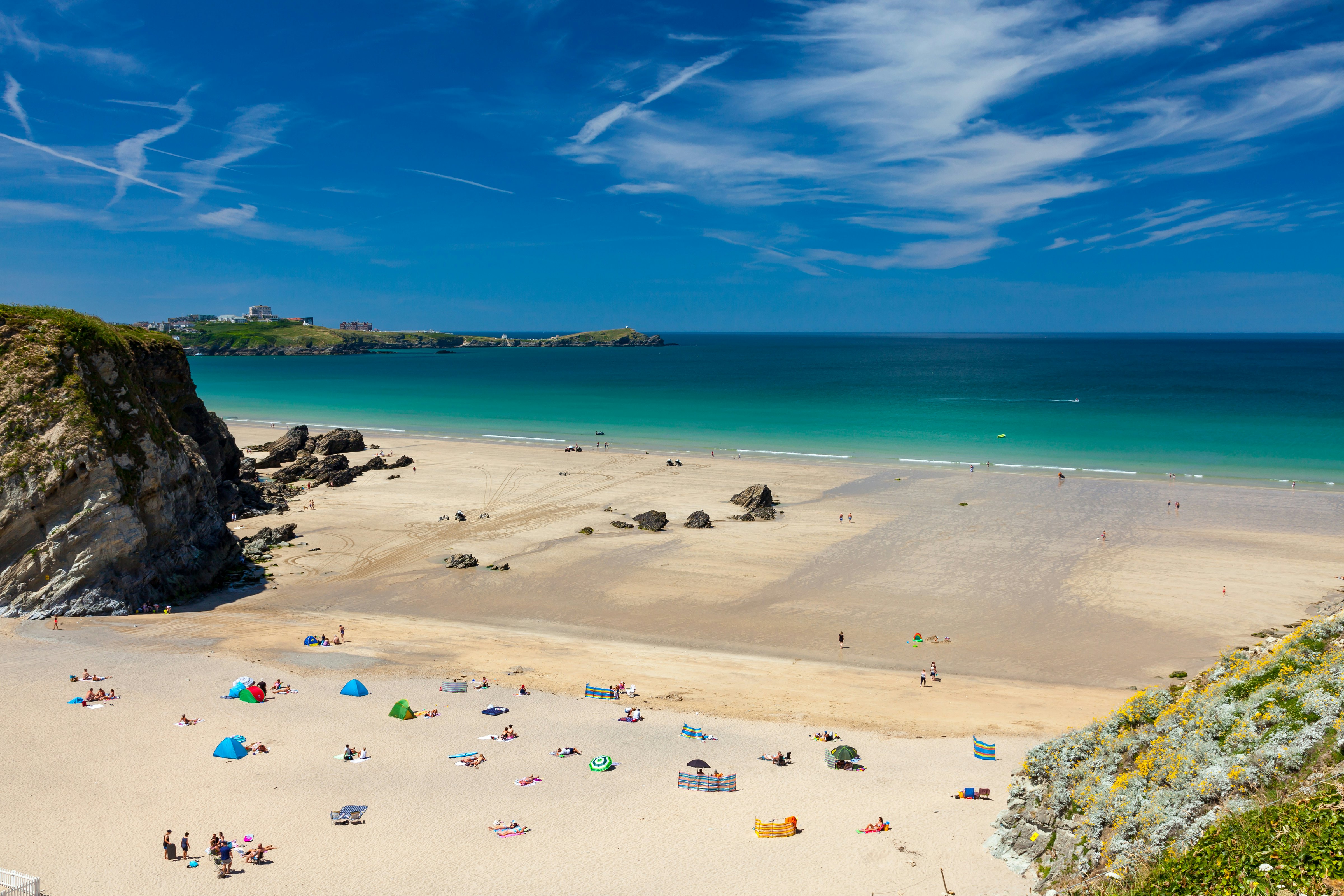
Great Western Beach, Tolcarne Beach and Lusty Glaze
Best for a less busy town beach experience
Next along from Towan Beach, and accessible to the train station, these three beaches are a little quieter for surfing than Fistral or Towan, but they do get busy with other beachgoers. Great Western takes its name from the Great Western Railway, as does the historic Great Western Hotel on the cliff. Lusty Glaze wins the prize for the best beach name on the north coast of Cornwall (or maybe all of England); it’s derived from an old Cornish term meaning “a place to view blue boats.”
As you move from east to west, the waves get bigger as the shelter from the headland becomes less pronounced. All three beaches have snack and refreshment stops that also draw plenty of families enjoying non-surfing days on the sand. Yet all of them lie at the bottom of the cliffs, which means you’ll face a steep climb when you leave at the end of the day.
Access: Limited paid parking spaces at the station and along Cliff Rd, plus a paid parking area at the top of the steps to Lusty Glaze. All three beaches sit at the bottom of steep steps; it may be easier to walk along the sand to Great Western and Tolcarne from Towan Beach.
Conditions: Great Western, Tolcarne and Lusty Glaze perform best a few hours after high tide. Waves can get big towards the Lusty Glaze end of the strip in winter.
Lifeguards: May to September (from July at Lusty Glaze).
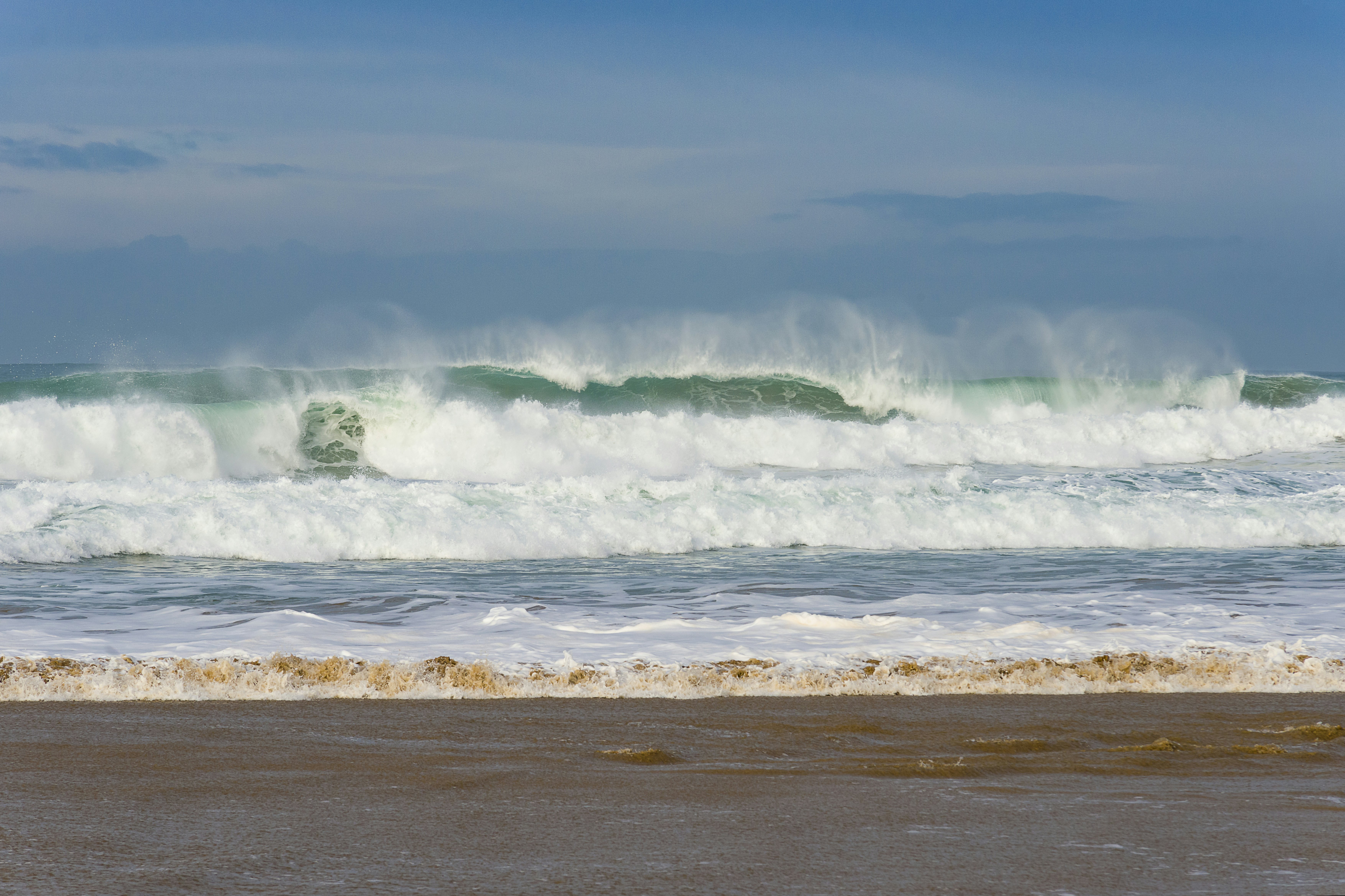
Watergate Bay
Best for big waves and events
A few miles north of Newquay – and quieter for it – Watergate Bay is long, wide and exposed. This means waves can be even bigger than at Fistral, but you’ll need to be prepared for rip currents. It’s a popular surf spot for locals, but usually calmer than Fistral, despite the high-quality waves.
This gorgeous 2-mile (3.2km) sweep of sand is backed by high cliffs, with the sleek Watergate Bay Hotel as a central landmark. Several surf schools cater to beginners on gentler sections, while the bigger waves lure experienced surfers and pros.
The beach gets busy in May during the English National Surfing Championships, and even busier in August when the bay serves as the camping zone and live music area for the Boardmasters Festival (the surf events take place at Fistral). There are several places to keep hunger pangs at bay, including the Watergate Bay Hotel’s popular Beach Hut.
Access: There’s a paid parking area at the top of the cliffs.
Conditions: Works well from mid-tide to high tide, particularly in winter. The high cliffs provide shelter from the wind, making this a good spot when other beaches are blown out.
Lifeguards: On weekends in April and October, daily from May to September.
Mawgan Porth Beach
Best for a local feel
North of Watergate Bay in an amphitheater-like cove at the mouth of the River Menalhyl, this exposed beach has a local feel, and being that bit further away from Newquay, it escapes the tourist crowds. The waves here are consistently surfable, though big swells can be rather treacherous; smaller days tend to be more popular. The King Surf school can help get beginners onto their first wave.
Access: There’s a paid parking area by the friendly Merrymoor Inn.
Conditions: Mawgan Porth is surfable at any stage of the tide, but the south end of the beach works particularly well at low tide to mid-tide.
Lifeguards: On weekends in April and October; daily from May to September.
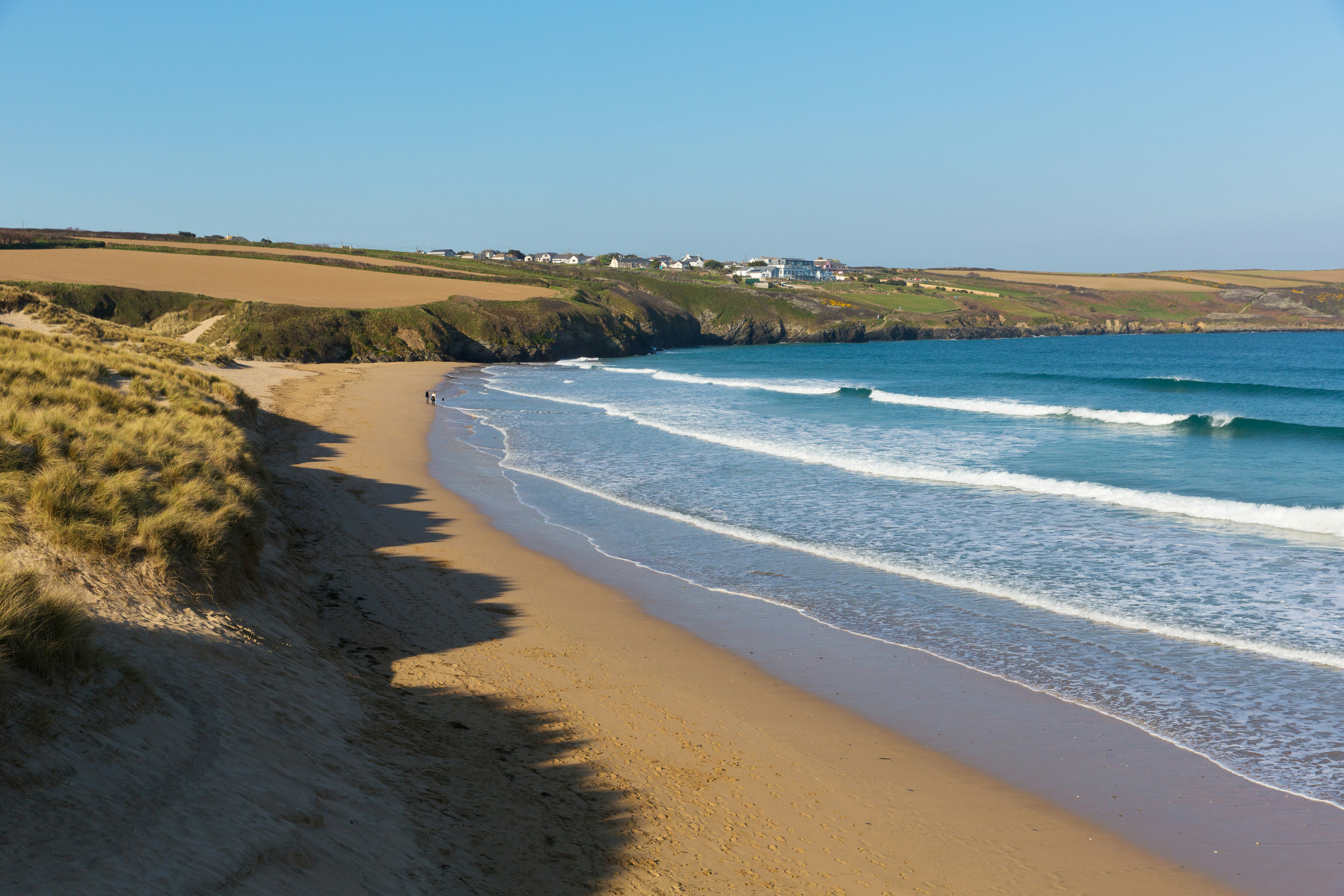
Crantock
Best for longboarders
At the sand-silted mouth of the River Gannel, Crantock sits below the Pentire Headland, south of Fistral Beach. With the broad sweep of sand here, you’ll face quite a walk to the surf. Still, the beach is popular with longboarders thanks to the long swells at the river mouth and the waves can be satisfyingly lively here at low tide and mid tide.
Administered by the National Trust, Crantock Beach is a quieter surf spot than Fistral, partly because you have to loop inland to drive here. If you come on foot, there’s a ferry across the Gannel at high tide in summer, run by the Fern Pit Beach Kitchen; you can also cross on foot at low tide. Big Green Adventures runs a surf school and activity center at Crantock.
Access: The National Trust paid parking area is close to the sand and there’s a kiosk and toilets, but it gets busy and many non-surfers come in the morning and stay for the day.
Conditions: The best surfing is a low tide or mid-tide; find solid lefts at the south end of the beach, and good rights for longboarders by the river mouth to the north.
Lifeguards: On weekends in April and October; daily May to September.
Holywell Bay
Best for surfers who like a challenge
South of Crantock and angled towards the surf rolling in from the west, Holywell can be a tricky spot to master, but plenty of locals like to give it a go. A wonderful expanse of white sand dotted with rock pools and pointed rock stacks, it’s quieter than the town beaches in Newquay, with a similar vibe to Crantock. Watch for currents, particularly when the tide is low.
Access: The National Trust paid parking area is close to the beach, with toilets and a kiosk; arrive early to grab a parking spot.
Conditions: The best-quality waves are at low tide or mid-tide.
Lifeguards: May to September.
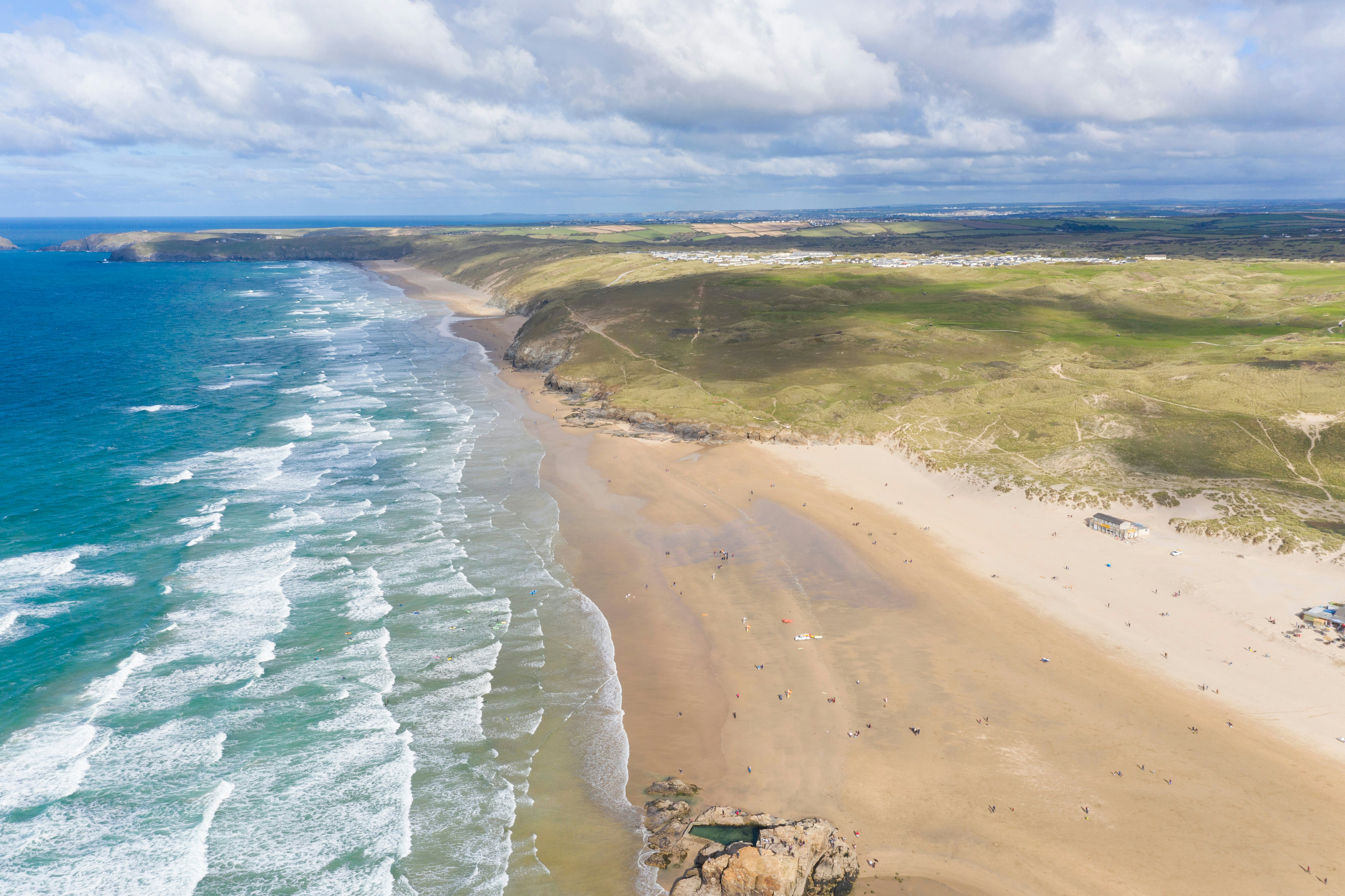
Perranporth
Best for a sense of space
The focus of this classic Cornish seaside town south of Holywell Bay is the magnificent 3-mile-long (4.8km) beach, which merges into the extensive Penhale Sands dune system. Reliable swells make this a popular spot for surfers and bodyboarders, but you’ll need to watch for rip currents.
If you’re new to the sport, Stoked Surf School offers lessons and equipment hire. The level sands also make Perranporth and Penhale popular for wind-powered sports such as kitesurfing and landboarding. If you surf at the quieter Penhale end, be prepared for a long walk across the dunes from the Haven Sand Dunes car park.
Access: Paid parking areas behind the beach at Perranporth and Penhale and up on the clifftop at Droskyn; come early to grab a spot.
Conditions: The waves at Perranporth perform best at low tide or mid-tide; expect good left-hand wedges by the Droskyn Headland at the south end of the beach, and good right-handers at the north end of Penhale Sands.
Lifeguards: April to November when flags are flying.
Does Newquay have good surf schools?
Newquay attracts thousands of budding boarders looking to catch their first wave or hone their skills, and numerous surf schools are on hand to help new arrivals get out onto the waves. Just behind Town Beach, Escape Surf School is good for beginners, and takes advantage of the gentler, easier-to-catch waves in this sheltered bay.
Also near Towan Beach are Newquay Watersports Centre, Newquay Activity Centre and Cornish Wave, offering surf lessons and a wide range of organized activities in and around the water. Run by four-time UK surf champ Adam Griffiths, NQY Surf School at Great Western Beach also has a good reputation, as does Wavehunters at Watergate Bay.
Over in busy Fistral Beach, Fistral Beach Surf School is long-established and respected, and it operates year-round. They cater to everyone from complete newbies to intermediate surfers looking to take things to the next level, and boards are available for rent. Other beaches all have their own surf schools.
Is there any accessible surfing in Newquay?
Surfing might not sound like an obvious accessible sport, yet adaptive surfing has a growing profile. The Newquay Activity Centre near Towan Beach is one of several schools promoting lessons that are open to surfers with additional needs. Surfing charity The Wave Project operates a seasonal adaptive surfing hub at Watergate Bay.
This article was adapted from Lonely Planet’s England and Devon & Cornwall guidebooks, published in June 2025.







